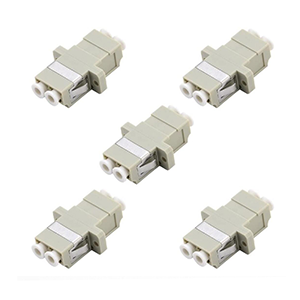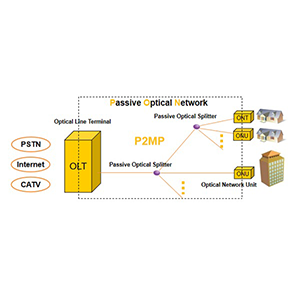Ethernet connections play an important role in modern computing systems. This article will introduce NVIDIA Ethernet AOC (Active Optical Cable) cables and their applications in this field. We will first define the concept and working principle of AOC cables and explain their advantages over traditional copper cables. Next, we will focus on analyzing the key features of NVIDIA Ethernet AOC cables, including transmission performance, cable length, low power consumption, and reliability.
We will explain how NVIDIA AOC cables support high-speed Ethernet applications, provide long-distance transmission options, excel in energy saving and thermal management, and have excellent mechanical strength and anti-interference capabilities. Then, we will explore the application of NVIDIA AOC cables in data centers, high-performance computing, 5G and other fields, and explain its unique advantages in different scenarios. Finally, we will provide key factors and precautions for selecting NVIDIA AOC cables and introduce what should be paid attention to in actual deployment.
What is Ethernet AOC cable
Let me give you a detailed introduction to the concept and working principle of Ethernet AOC cables and its advantages compared with traditional copper cables.
Definition and working principle of AOC (Active Optical Cable):
AOC cable is a new type of Ethernet transmission medium that integrates optical fiber and electronic equipment in the same cable. Specifically:
- AOC cable consists of optical fiber, optical transceiver and control circuit
- The optical transceiver converts electrical signals into optical signals to achieve optical fiber transmission
- The control circuit is responsible for driving and signal processing the optical transceiver
- Electronic circuit modules are integrated at both ends of the cable
This integrated design enables AOC cable to have the function of automatic photoelectric conversion without the need for separate optical transceiver equipment.
Advantages of AOC cables over traditional copper cables:
(1) Longer transmission distance
- AOC cables can achieve Ethernet transmission up to 100m
- Traditional copper cables are usually limited to a transmission range of 10-15m
(2) Higher bandwidth
- AOC cables are based on optical fiber transmission and can provide bandwidths up to 10G/40G/100Gbps
- Copper cables are limited to a bandwidth upper limit of 1G/10Gbps
(3) Strong anti-interference ability
- Fiber optic transmission is not affected by electromagnetic interference, and the signal is more stable and reliable
- Copper cables are susceptible to external electromagnetic interference, and the transmission quality is limited
(4) Lighter weight
- AOC cables are made of lightweight optical fibers, which are lighter and more portable
- Copper cables are made of metal conductors, which are heavier and not easy to install
In short, AOC cables have shown obvious advantages in applications requiring long-distance and high-bandwidth Ethernet due to their superior physical properties and transmission performance, and are increasingly attracting market attention and applications.
Features of NVIDIA Ethernet AOC Cables
Let me summarize the main features of NVIDIA’s Ethernet AOC cables:
Transmission performance:
- NVIDIA AOC cables support up to 100G Ethernet transmission bandwidth
- Available in multiple rate options such as 25G, 40G, 50G and 100G
- This enables it to meet the demanding needs of high-performance computing, artificial intelligence, etc. for high-speed networks
Cable length:
- NVIDIA AOC cables offer up to 100 meters of transmission distance options
- This far exceeds the distance limitations of copper-based Ethernet cables
- In large-scale computing systems and data center applications, it can greatly simplify wiring and cable management
Ultra-low power consumption:
- NVIDIA AOC cables have lower power consumption than copper cables
- Mainly due to the low power consumption characteristics of optical fiber transmission
- This helps reduce the overall energy consumption and thermal management burden of the system
High reliability:
- NVIDIA AOC cables are designed with high-strength optical fiber and metal casing
- Excellent mechanical strength and anti-interference capabilities
- Able to maintain stable and reliable transmission in harsh industrial and outdoor environments
In general, NVIDIA’s Ethernet AOC cables have demonstrated a wide range of application value in high-performance computing, data centers and other fields with their excellent high-speed transmission performance, long-distance capabilities, low power consumption characteristics and excellent reliability. This makes it an ideal choice for high-speed Ethernet applications.
Application scenarios of NVIDIA Ethernet AOC cables
Let me introduce you in detail the advantages of NVIDIA Ethernet AOC cables in major application scenarios:
Data center:
- Data centers have an urgent need for high-bandwidth, low-latency Ethernet transmission
- NVIDIA AOC cables can provide ultra-high bandwidth up to 100G
- Its long-distance transmission capability also simplifies the cabling requirements of data centers
- At the same time, excellent reliability also ensures the stability of data center networks
High-performance computing:
- HPC systems are critical to high-speed, low-latency network connections
- NVIDIA The 100G transmission performance of AOC cable fully meets the requirements of HPC
- Its low power consumption also helps to reduce the overall energy consumption of HPC clusters
- At the same time, high mechanical strength also ensures reliable transmission in HPC environment
5G network construction:
- 5G base stations have extremely high bandwidth and distance requirements for fronthaul networks
- NVIDIA AOC cable can provide 100G transmission in 5G fronthaul networks
- Its long-distance transmission characteristics also facilitate the deployment and wiring of 5G base stations
- The robust mechanical design also ensures transmission stability in outdoor environments
Video surveillance/broadcasting:
- High-definition video surveillance and broadcasting applications require large bandwidth and low latency transmission
- NVIDIA AOC cables can provide up to 100G video transmission bandwidth
- Long-distance transmission capabilities also simplify the deployment of monitoring and broadcasting systems
- Excellent anti-interference performance also ensures high-quality transmission of video signals
In short, NVIDIA AOC cables have demonstrated a wide range of application value in data centers, HPC, 5G and other fields with their excellent high-speed Ethernet transmission performance, long-distance capabilities, low-power design and high reliability, becoming an ideal network transmission solution in these scenarios.
Selection and deployment of NVIDIA Ethernet AOC cables
Let me summarize the key factors and considerations to consider when selecting and deploying NVIDIA Ethernet AOC cables:
Key factors for selecting NVIDIA AOC cables:
(1) Transmission rate
- Choose the appropriate rate according to the bandwidth requirements of the application scenario, such as 25G, 40G, 50G or 100G
(2) Cable length
- Choose the appropriate cable length according to the actual distance requirements of the network layout
(3) Power requirements
- Ensure that the power supply system can meet the power consumption requirements of the AOC cable
(4) Mechanical strength
- Select the appropriate AOC cable for the mechanical stress conditions of the installation environment
(5) Interface compatibility
- Ensure that the optical interface of the AOC cable is compatible with the port type of the network device
Deployment precautions for NVIDIA AOC cables:
(1) Cabling planning
- Plan the AOC cable routing path in advance and try to avoid excessive bending
- Leave appropriate length margin for installation and maintenance
(2) Connection and installation
- Carefully check the cleanliness of the optical interface to ensure that there is no dust
- Be careful to avoid mechanical damage to the AOC cable
(3) Fixing method
- Use appropriate fixing methods, such as clamps, cable ties, etc., to prevent the cable from being stressed
- Ensure that it is firmly fixed and will not break due to external forces
(4) Label management
- Keep a good record of AOC cables for subsequent maintenance and management
- Indicate key information such as length, connected equipment, etc.
(5) Environmental protection
- When deployed in harsh environments, necessary protection measures should be taken
- Such as pipe corridors, pipelines, etc., to prevent cables from being damaged by the outside world
In short, when selecting and deploying NVIDIA AOC cables, it is necessary to comprehensively consider many factors such as their technical indicators, application requirements and installation environment, and take appropriate measures to ensure that the cables can function reliably and efficiently.
Summary
NVIDIA Ethernet AOC cables play a key role in building high-performance, reliable computing networks. Our company has long focused on the research and development and production of optical communication equipment and its supporting products, and has rich industry experience. The NVIDIA AOC cable products we provide have reached the industry-leading level in terms of transmission performance, cable length, energy consumption management and reliability, and can meet your demanding needs for high-speed and efficient network construction.
Whether you need to deploy NVIDIA AOC cables in data centers, high-performance computing, or 5G networks, we can provide you with customized solutions. At the same time, our professional team will provide you with a full range of technical support, including on-site surveys, solution design, and equipment installation and maintenance. Contact us now to learn more about the application of NVIDIA Ethernet AOC cables.
NVIDIA AOC cables FAQ
NVIDIA Ethernet AOCs are high-speed, low-latency active optical cables developed by NVIDIA to provide Ethernet connectivity in data center and enterprise networking applications.
NVIDIA Ethernet AOCs support Ethernet speeds up to 100GbE, offer low power consumption, and are designed for easy plug-and-play installation with minimal signal degradation over long distances.
NVIDIA Ethernet AOCs are primarily used in high-performance computing, artificial intelligence, and data center environments where high-bandwidth Ethernet connectivity is required.
The key difference is that NVIDIA Ethernet AOCs use optical fiber instead of copper wires to transmit data, enabling longer reach and higher bandwidth compared to traditional Ethernet copper cables.
NVIDIA Ethernet AOCs can support data rates up to 100Gbps and reach distances up to 100 meters, depending on the specific cable model and fiber type used.
The main advantages include higher bandwidth, lower power consumption, reduced electromagnetic interference, and the ability to span longer distances without signal degradation.
Installation involves simply plugging the AOC connectors into compatible Ethernet ports, while proper cable management techniques should be used to route and secure the optical cables.
Important specifications include low insertion loss, high return loss, power consumption, and compliance with relevant industry standards, such as IEEE 802.3.
Troubleshooting may involve checking physical connections, verifying link status, and using optical test equipment to identify any signal quality or transmission issues.
Ongoing advancements may include the introduction of higher-speed AOC cables, integration with new networking technologies, and further optimization for improved performance and power efficiency.



